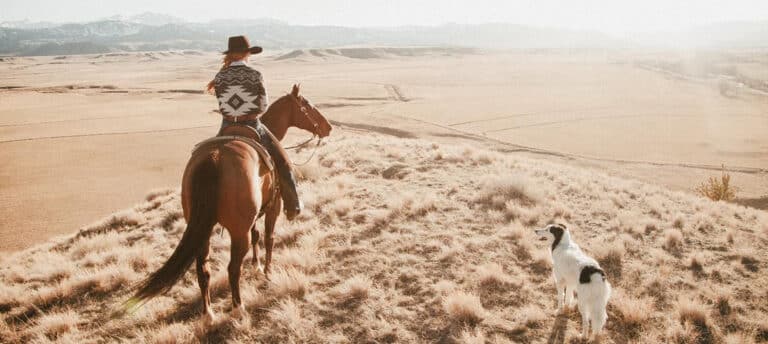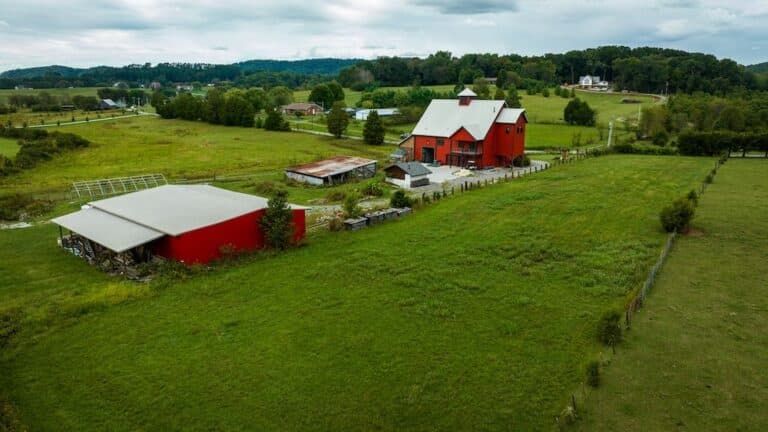After what’s been a brutal and particularly cold winter for many parts of the country, including those who are normally spared the worst of the winter weather—yes, Austin, we’re looking at you—we’re really hoping Punxsutawney Phil comes through for us all this week with his seasonal prognostications.
But even if Groundhog Phil’s shadow casts a lengthening gloom on spring proceedings, here’s one thing we can guarantee: the spring wildflower blooms that will inevitably sweep fields, hillsides and landscapes across the country are always worth the wait. To prepare, here are our picks for six diverse and spectacular locations around the United States where the shift from winter to spring and summer merely serves to magnify the beauty of Mother Nature’s ever-shifting canvas.
The Texas bluebonnet is to Texas what the shamrock is to Ireland, the cherry blossom to Japan, the lily to France, the rose to England and the tulip to Holland.
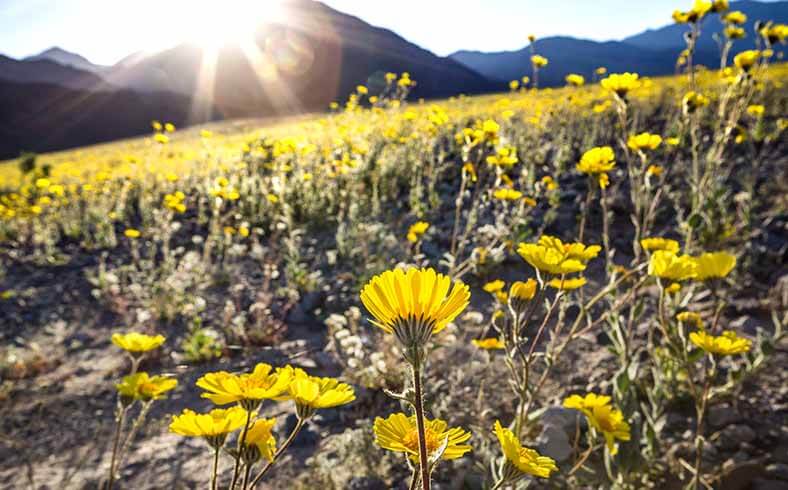
Death Valley National Valley, California
The Death Valley wildflower show is no sure-thing, depending on a variety of climatic conditions to let Mother Nature paint her full palette across this most hostile of desert landscapes. The spring wildflower bloom can typically be seen from mid- to late February through April at lower elevations, and through May in the higher areas of Death Valley National Park. The increased rainfall of an El Niño weather pattern will typically bring out the best of the flowers, although this year NOAA reports a “weak-to-moderate La Niña system” (last year brought a “super bloom”). Other areas where the colors of spring provide a vivid contrast to the normally dry desert backdrop are South Mountain Park on the outskirts of Phoenix, Arizona, Anza-Borrego Desert State Park near San Diego and the colorful fields of poppies in Antelope Valley California Poppy Reserve north of Los Angeles.
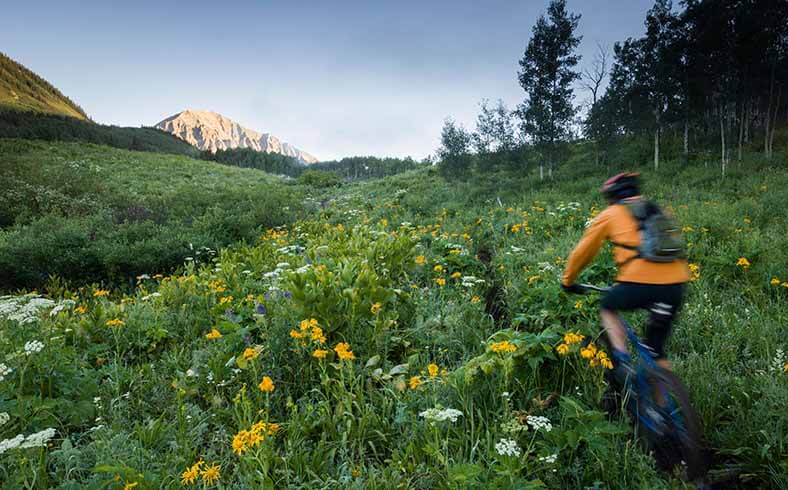
Crested Butte, Colorado
High in the Colorado Rockies, Crested Butte may be better known as a stellar outdoor playground, but come July, all eyes are on its alpine meadows and passes for the profusion of colorful wildflowers. Since 1986, the annual Crested Butte Wildflower Festival has provided yet one more seasonal excuse to visit this four-season paradise. The festival puts on a number of guided walks and nature tours, while the self-propelled have no shortage of hikes and bike trails, including the aptly named 11-mile Lupine Trail, a popular ride for visitors and locals alike.
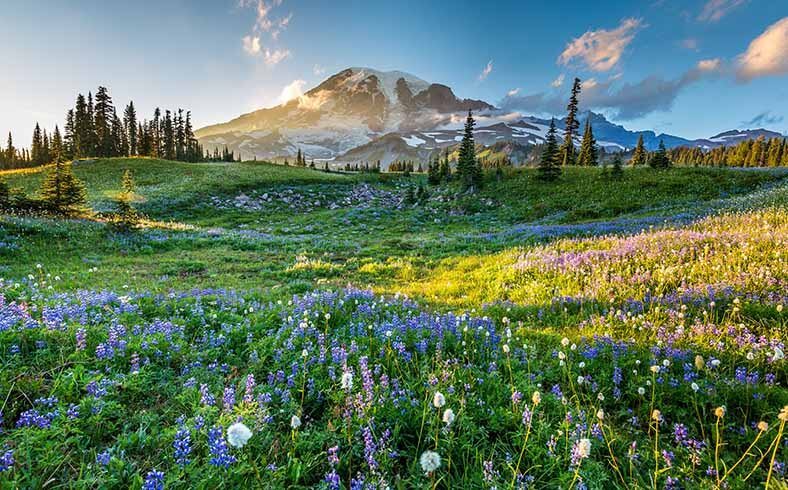
Mount Rainier National Park, Washington
The wildflower-filled meadows spilling off the slopes of Mount Rainier are the foreground to innumerable wall calendars and desktop wallpapers—with good reason. Coming into full bloom in July through early August, subalpine blooms here include multiple varieties of colorful aster and lupine. A number of easy trails provide access from the park’s Paradise and Sunshine visitor centers, although intrepid hikers should consider a section or all of the 5.4-mile Skyline Trail, which will give you the full experience of both wildflowers and unsurpassed mountain views.
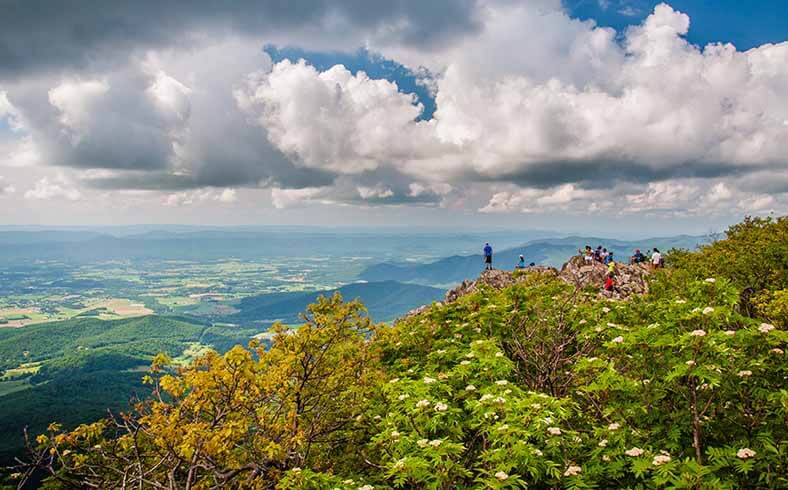
Shenandoah National Park, Virginia
Washington, D.C.-area locals time the arrival of spring with the bloom of the cherry blossoms around the capital’s Tidal Basin—not to mention, the accompanying crush of tourists—but it’s the burst of the creamy-white petals of the region’s distinctive dogwood trees that really herald the arrival of the growing season. About 70 minutes west of the nation’s capital, the ridgeline curves of Shenandoah National Park are the place to catch the dogwoods and other spring blooms, with hikes that lead to waterfalls and swimming holes as well as scenic outlooks like those atop Old Rag, Stony Man Mountain and Little Devils Stairs.
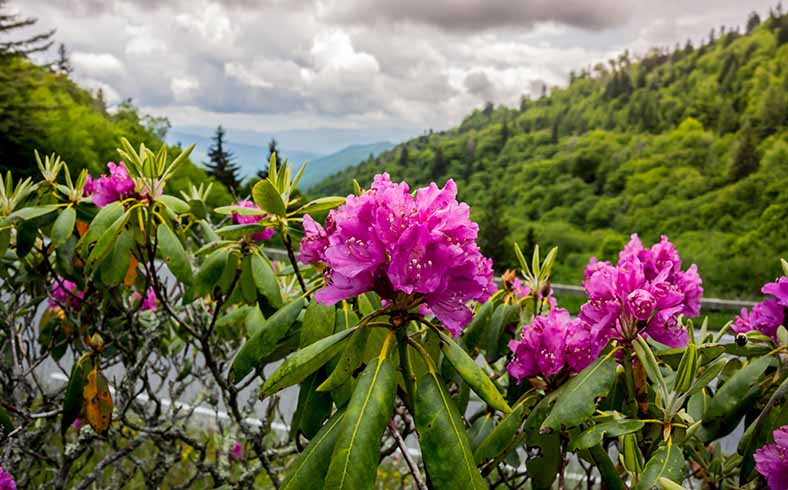
Great Smoky Mountains National Park, North Carolina/Tennessee
With over 1,500 types of flowering plants recorded in this banner East Coast national park (the country’s most visited), there are no shortage of options to discover spring blooms in this diverse 800-square-mile swatch of mountains, valleys, streams and meadows. The trick here is to find a place where the hordes of tourists aren’t, so take a cue from the experts at Backpacker magazine with these Secret Hikes of Great Smoky Mountains Park. (Can’t get there in spring? The fall show is just as dazzling, but the same rules apply: Ditch the blue-ribbon trails and scenic outlooks for longer hikes that require some sweat equity for that scenic, and uncrowded, payoff.)
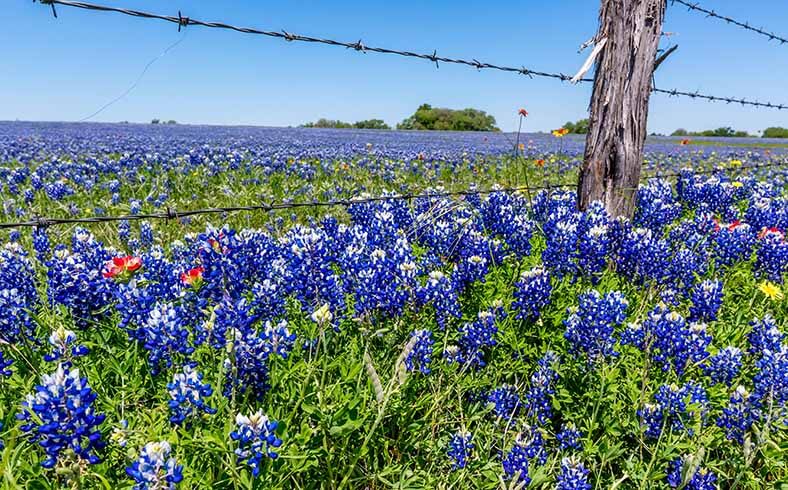
Texas Bluebonnets
As one natural historian notes, Lupinus texenis—aka, the Texas bluebonnet—is to the Lone Star State “what the shamrock is to Ireland, the cherry blossom to Japan, the lily to France, the rose to England and the tulip to Holland.” Most commonly found in central and southeastern Texas, a number of regions vie for the honor of best place to see Texas bluebonnets, including the town of Ennis, which lies south of Dallas and holds the title as the state’s “Official Bluebonnet Trail.” Other towns where the distinctive blue flowers are on full display each spring are Brenham (host to its own 80-mile Bluebonnet Trail) and Burnet in Texas Hill Country (the Texas state legislature’s officially designated Bluebonnet capital of Texas). Titles aside, we say these beautiful blue blooms are worth the look wherever you may meander.

